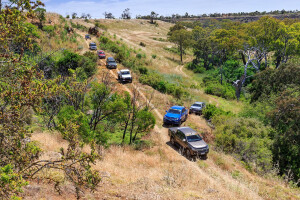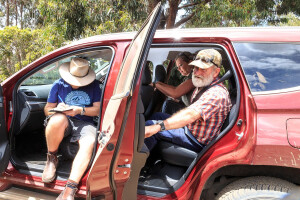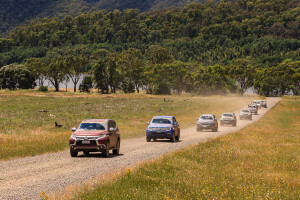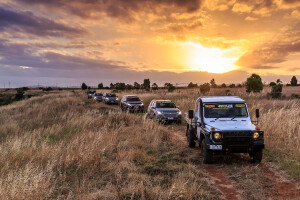Latest Review

Tested: Mercedes-Benz G400d
Could this be the best G-Wagen yet?
You can count the number of true four-wheel-drive icons on one hand – Jeep, Land Rover, LandCruiser, Patrol and the Mercedes-Benz G-Wagen. While the Mercedes might be the youngest model in the group, it has remained true to its original design more so than any of the others.
For 40 years the G-Wagen was hand made in very limited numbers using the same body panels, chassis and design but then in 2018, Benz came out with a second generation of G. The new-gen G retains its iconic look with a boxy body riding on a separate chassis, but that body is now wider and more streamlined and the chassis uses independent front suspension in lieu of the trusty live axles.
Until now, the new generation G-Class has only be available in Australia in hot rod AMG G63 form at upwards of $290,000, but that hasn’t deterred buyers with the company selling every one of them it could get into the country. Now we’ve been gifted a new model G in the form of the six-cylinder diesel-engine powered G400d.
The G400d lands at $233,776 plus on-road costs ensuring that the vehicle, which is still hand made in Austria, remains a fairly exclusive ride and not a 4x4 you’re likely to see towing a caravan around Australia. Although we’d like to see that!
POWERTRAIN & PERFORMANCE
The G400d is powered by Mercedes-Benz’s new 3.0-litre in-line six-cylinder diesel engine, code-named the OM656 engine. The in-line six replaces Benz’s long-serving and widely used V6 diesel engine and is used in a range of the brand’s passenger cars and SUVs. In the G400d it makes 700Nm of torque and 243kW of power making it the most powerful diesel engine that Benz has ever fitted to a passenger car.
The OM656 engine uses a few technologies not normally seen on working-class diesels to improve its performance and clean up its emissions. The turbocharger is a single unit but incorporates two turbos working in succession like a twin-turbo set-up. This unit gives the best torque delivery right through the broad rev-range, but is more compact than a conventional twin set-up.
The engine itself employs an alloy block and cylinder head, and the head has variable lift camshaft on the exhaust side to optimise flow and emissions.
This engine is a sweetheart! Its power delivery comes in smooth and linear. The grunt is diesel-like but the sound not so much, being more subdued with not a hint of diesel clatter heard in the cabin. These characteristics make the engine very tractable and easy to drive under any conditions. Quite rewarding too if you put your foot down, however it falls short of the AMG G63’s turbocharged V8 in the smile-factor.
Yes, the G400d is more economical than the V8 petrol G63 with an official 9.5L/100km rating on the combined cycle and returning 11.9L/100km during our few days of touring with it. While that fuel figure might seem high by modern standards, you need to remember that the G remains a 2.5-tonne, brick-like wagon that takes some motivating.
The diesel engine is backed by a nine-speed automatic transmission that is faultless. I know some people don’t like it, I reckon Benz’s unique combination of a column-mounted stalk for Park, Drive and Reverse shifting, and paddles behind the steering wheel for manual gear selection, is the best system for both on- and off-road driving.
ON ROAD RIDE & HANDLING
A major part of the changes made to create the second generation G-Class was ditching the live front axle and replacing it with double wishbone independent configuration. While the live axle is great for durability and off-road use, the IFS is far better for ride quality, road holding and dynamics.
This is clearly evident to anyone who drove a pre-2018 G-Wagen when they get behind the wheel of a new G-Class. The second generation vehicle steers more precisely, absorbs mid-corner bumps better and rides smoother than the older vehicle making for a better all-round drive experience. You still get a bit of bump steer from the rear axle on rough, unsealed roads, but it stays firmly planted and controlled on sealed surfaces.
The suspension uses coil springs and adaptive dampeners which you can manually switch between sport and comfort settings or let them adapt on their own. I was particularly impressed with them after leaving the lot from where I picked the car up and I was surprised at how much it lurched through the first low-speed corners. Yet further down the road at higher speeds, it cornered flat and stable on freeway exit ramps. Out on the open roads, they always feel just right.
The dampeners constantly adapt to different driving conditions including speed, cornering loads and road surface, to deliver the best performance and they do it surprisingly well. They are also specifically designed for off-road durability including resisting rocks, the extreme fluctuating temperatures found when crossing water and the rigours of dust and grime.
OFF ROAD
If you think that the second-generation G would lose anything in terms of off-road ability by switching the front end from a live axle to IFS, you’d be wrong. The G-Wagen has never had a lot of axle articulation and wheel travel, even when it had live axles under both ends. Instead, it relies on its triple differential locks to keep things moving when it lifts a wheel or two.
The G-Wagen has a full-time four-wheel-drive system so it employs driver-activated diff locks for the centre, front and rear diffs to send drive to all wheels when the electronic traction control just isn’t enough. These work just as effectively on the newest models, although we weren’t able to put them to the test on this limited drive.
The G400s wears 19-inch alloy wheels with 275/55 tyres which serve it well for most conditions. However, uncommon19-inch wheels are a terrible size for anyone wanting to fit more rugged off-road-suitable tyres, but there is an 18-inch wheel option on the G400d that opens up a lot more tyre choices.
CABIN & ACCOMMODATION
The G400 is equipped just as you would expect any Mercedes-Benz costing more than a quarter of a million dollars. Step inside and you are greeted by power-adjustable leather seats; digital screens that stretch two-thirds of the way across the broad leather-capped dash; a 13-speaker sound system and all the luxury and safety features you expect behind the three pointed star.
Most importantly to G-Wagon fans, the switches for the three locking differentials are still found proudly mounted high up on the dash, while the low-range button remains on the console.
The second-gen G was made wider to improve space within the cabin, which is certainly appreciated although this is still not a massive wagon. It’s more like an 80 Series LandCruiser in size compared to a 200 Series, or a GQ Patrol compared to a Y62 Nissan. There’s enough space inside for four adult passengers comfortably plus luggage in the back, but nothing like the interior space of say the Mercedes-Benz GLS wagon.
The front seat passengers sit upright in the tall cabin and are afforded a broad view through the flat windscreen. The back seat folds forward to increase load space but it doesn’t fold flat meaning there’s a step up to where the seat is.
SAFETY
The G-Wagen might be more than 40 years old but the second-gen models don’t skimp on safety features. These include AEB, lane keeping assist, ESC, Pre-Safe, speed sign reading, and radar cruise control.
PRACTICALITIES
The new G-Wagen might have made concessions to make it better to drive, more luxurious and stylish, but it hasn’t forgotten its practical military heritage. Everything about this vehicle speaks functionality. Big buttons and controls for the driver, heavy-duty tow points on the ladder chassis, a 3500kg towing capacity, 150kg roof load limit, 18-inch wheel option, coil springs, tie-down and power points in the cargo area; these features all making the G400d suitable for a touring vehicle no matter where you live.
Sure the Australian 4x4 aftermarket doesn’t have a lot to offer for the G-Wagen owner, but there is a selection of products available from Europe and even a bit of genuine Mercedes-Benz accessories. The biggest impracticality for most of us is the price, and would you want to off-road it.
SUMMARY
The G400d could be seen as a less sporting but more practical alternative to the AMG G63, but it doesn’t really lack any performance. The G400d is claimed to do the zero to 100km/h dash in 6.4 seconds which might be two seconds slower than the AMG over the same sprint but certainly no slouch.
With its more sensible wheels and tyres and more efficient powertrain, the diesel version is a far more usable vehicle in any conditions. The superb OM 656 engine, combined with the size and chassis changes of the 2018 update, make this G400d possibly the best Gelandewagen ever. And it comes at a time when demand for the G63 is still so hot that you can’t order a new one in Australia, leaving the G400d as your only G-Class choice for the time being.
SPECS
OFF-ROAD SPECS
*Measured at GVM
† Min measured at GVM
Things we like
- Sublime powertrain
- Functional design
- Improved drivability
Not so much
- Low ground clearance
- High purchase price
- 19-inch wheels as standard
News
-
 News
NewsThe 2024 Mercedes-Benz EQG electric G-Class is on schedule
Following last year's unveiling of the EQG concept, the German brand has confirmed a mid-2024 launch is planned
-
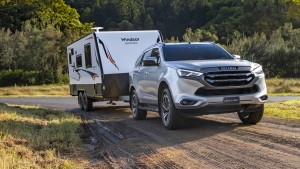 Advice
AdviceTowing: How much can my large SUV tow?
The ability to tow bigger loads is one of the primary ‘reasons for purchase’ of large SUVs, so we’ve compiled a handy guide just how much the most popular mainstream models can haul
-
 News
NewsMercedes-Benz G-Class wait times 'have blown out to 2024'
The company says order books are still open, but refuse to comment on the production schedule
-
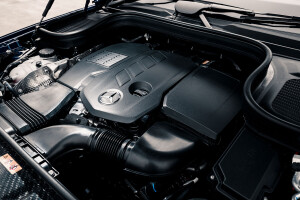 News
News2017-2021 Mercedes-Benz diesel models recalled
Certain models fitted with the OM654 and OM656 engines are affected
-
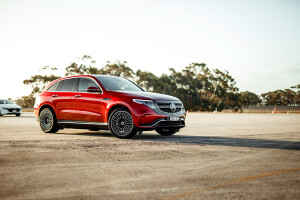
2018–2020 Mercedes-Benz SOS system recall impacts almost 40,000 vehicles
-

New military Mercedes-Benz G-Wagen unveiled, could lead to an Ineos Grenadier competitor
-
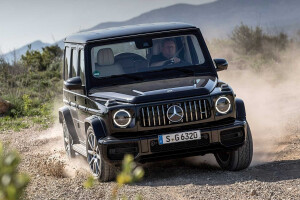
Mercedes-Benz is finally set to unveil the EV version of its G-Wagen
-
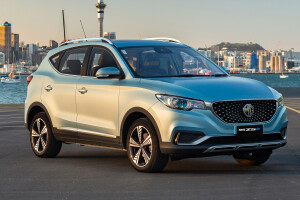
Australia's fastest-selling cars revealed




